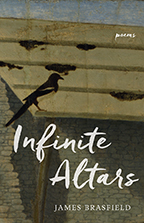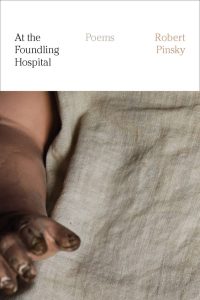Demi-Gods, by Eliza Robertson
Bloomsbury, 2017
230 pages, paper, $26

I have been a fan of Canadian novelist Eliza Robertson’s work since reading her short story collection, Wallflowers, released in 2014. Her work shows the precision and intensity of her gaze coupled with an easy and skillful exploration of language that always makes her work a pleasure to read. In Demi-Gods, her first novel, Robertson shows us a deeper settling into character and consciousness often not possible in the short story form. Full of secret interiorities and occupied with the essential question of how we view ourselves and how this choice affects our life’s suite of movements, Demi-Gods pulses with the energy of inner and outer life. It is remarkably consistent in focus, poetic and lucid in its articulations about the human spirit.
The novel is divided into three main parts that take place over different time periods in the narrator, Willa’s, past, followed by a short fourth section set in what is roughly the narrative present. Predominantly set in the ’50s and early ’60s, Willa recounts parts of her late childhood, adolescence, and young womanhood, spent in Salt Spring Island (between Vancouver Island and mainland BC) and, later, California. The narrative crux focuses around Willa’s relationship with Patrick, a sort of half-brother: he is the younger son of her mother’s new boyfriend and arrives on the island with the disruptive energy of unhinged youth. Willa is nine and Patrick is eleven and their relationship is charged: already he ropes her into games of strangeness and degradation. The first game they play is so surprising and aberrant I felt shock and surety that I was in the hands of a capable, original voice: “The vulgarity of the action made me want to laugh—it excited me in a strange way. I could pass all of his tests, even the naughty ones.”
From the relationship springs the core tension of the novel, that is, the power in the act of viewing one another and how this is tethered to the motion of control. Willa’s act of writing, in seeking to rationalize her past, is itself an act of control—we see how the past she is trying to articulate moves and shifts, as do her relationships and her impressions of them. Her fate of being twinned to Patrick, of being reflected in his image, is itself susceptible to warps of movement, to slips and loosenings of focus: themes which transfer themselves to the characters and the drama as the novel develops. We end up on a roiling sea where everything is tilting and the characters are taking turns at being drugged. Robertson seeks to show that there is no archetypal relationship, and yet everything is archetypal. There is always the push-pull of motion, of attention. People make each other do things because they can. Rather than seeking to understand why, Robertson unfurls this type of relationship in its mottled and kaleidoscopic essence. It is inhabited, and not explained: “We sensed the other person, of course, if anything our sense of the other person had intensified, but we allowed each other that civility, to pretend not to know we were watched.”
Because the action takes place in one person’s memory, Robertson can give us the action in full, aesthetically beautiful prose. Her words have a tack—a corporeality that fits with the narration described: “Dad let us live like beach clams. We burrowed in the sand and sucked nutrients from the salt, sand fleas exploring our noses like luminous shrimp. We built clam gardens. We cleared the rock from our beach and constructed a wall. The clams stretched their tongues and spat water between our toes.” Robertson’s emphasis on reflection and vision is repeated throughout the work in instances of stillness and quiet beauty: “Luke’s gaze hung on the lake, which glittered beyond the horsetails and spirals of blackberry […] The water glinted sharply—at that moment, it seemed a lake reflected more light than the sea. The ocean absorbed light, held the sun. A lake spat the sun at you.” There shapes she forms with her sentences are visceral. The work shows a focus on the gestural, which makes words feel like they are touching their subjects: “It took an hour to reach home because I rode one-handed, cradling the jar of cream against my belly-button. […] I wanted to go home. I wanted to hide this cream under my bed, then tiptoe along the trunk of my arbutus tree and think about the boy who drove the dairy cart.”
As the plot develops, Willa’s impressions become more adult-like: she sees her sister marry and then the fallouts of an unhappy union; she knows what it is to have sex. Willa, like Robertson, is an observer and is not drawn to explicitness. It is as though conveying feelings plainly or clear openness would break a spell or not describe the true state of things sufficiently. There are implied understandings, and there is a sense of uncertainty and equivocality that comes with the awareness of not being entirely in control of fate: “I could feel the future encroach as a shadow encroaches on a day when you spend every hour outside and fail to notice the sun slipping below the horizon.”
It is appropriate to end on an excerpt, displaying the essence of the book, Willa’s ultimate solitude, and the turning trajectory of the novel as it is occurring:
When I reached the side, I leaned over the gunwale. A school of fish hung suspended in the water, the light glinting off their bodies before the fleet lifted and tilted into the tide. I could hear Joan and Kenneth fighting in the galley. I tried to block out the sound, inhaled the ocean’s salt on my skin, the tang of seagull shit dried onto the deck. Slowly, larger shadows overtook the shadows of the helm. Then these darknesses—spilled by masts, the boom—were overtaken by the largest shadow, of Earth turning away from the sun. I closed my eyes. The wind fingered the curl that had dropped from my braid, dangling down the nape of my neck.
Languid in feeling yet tautly controlled, Demi-Gods looks at the interiorities we can’t explain to ourselves: what we show and what remains hidden. The final image leaves us with a full tidal pool, suggesting the underbelly of the ringing surface of the world, a multiplicity of hidden movements: “a pool gathered in the lap of a rock with mossy bunches of anemones and gunnel fish and barnacles.” How can we contain what we see when we look backwards? What is uncovered by the action of doing so?



















